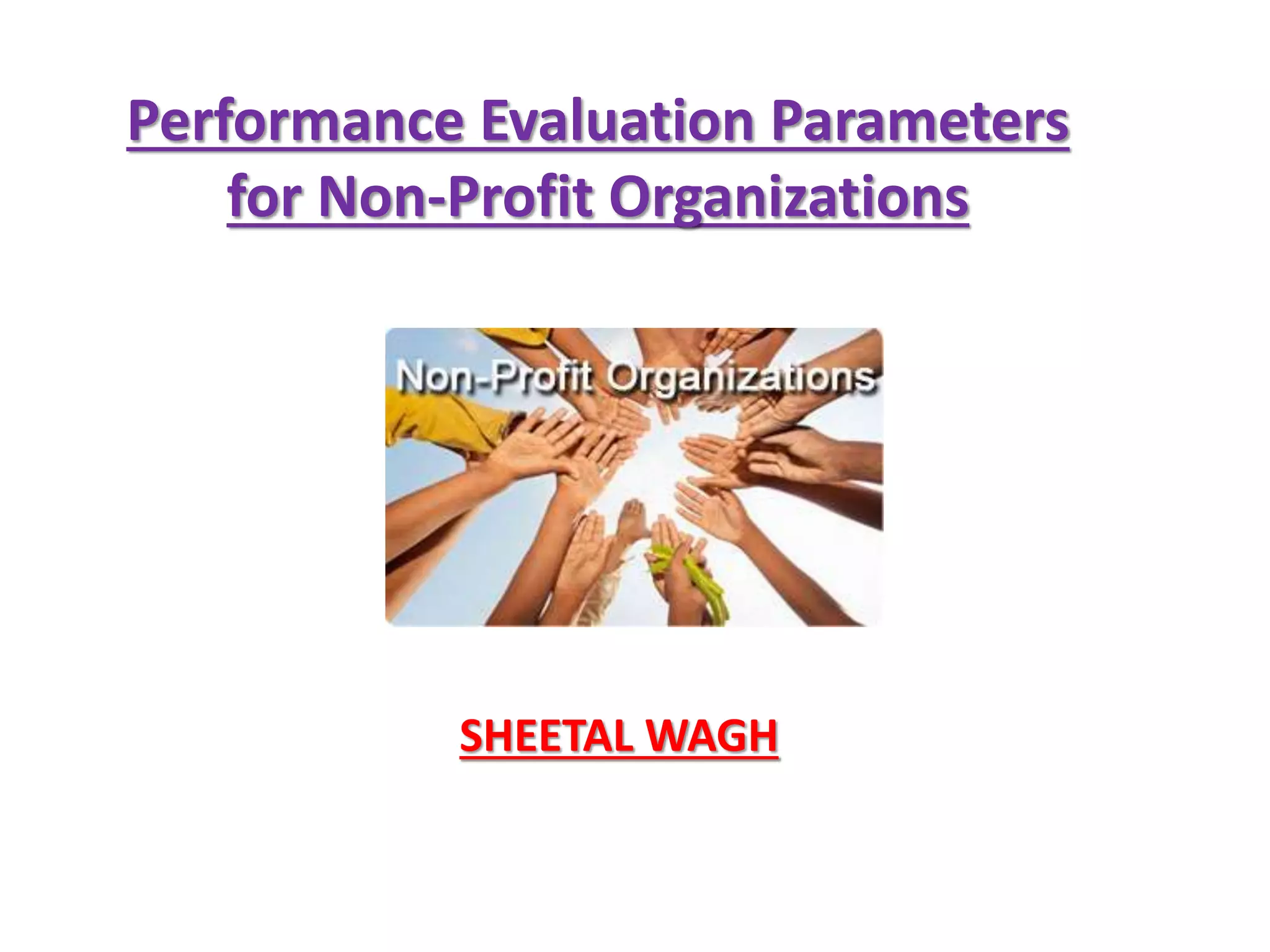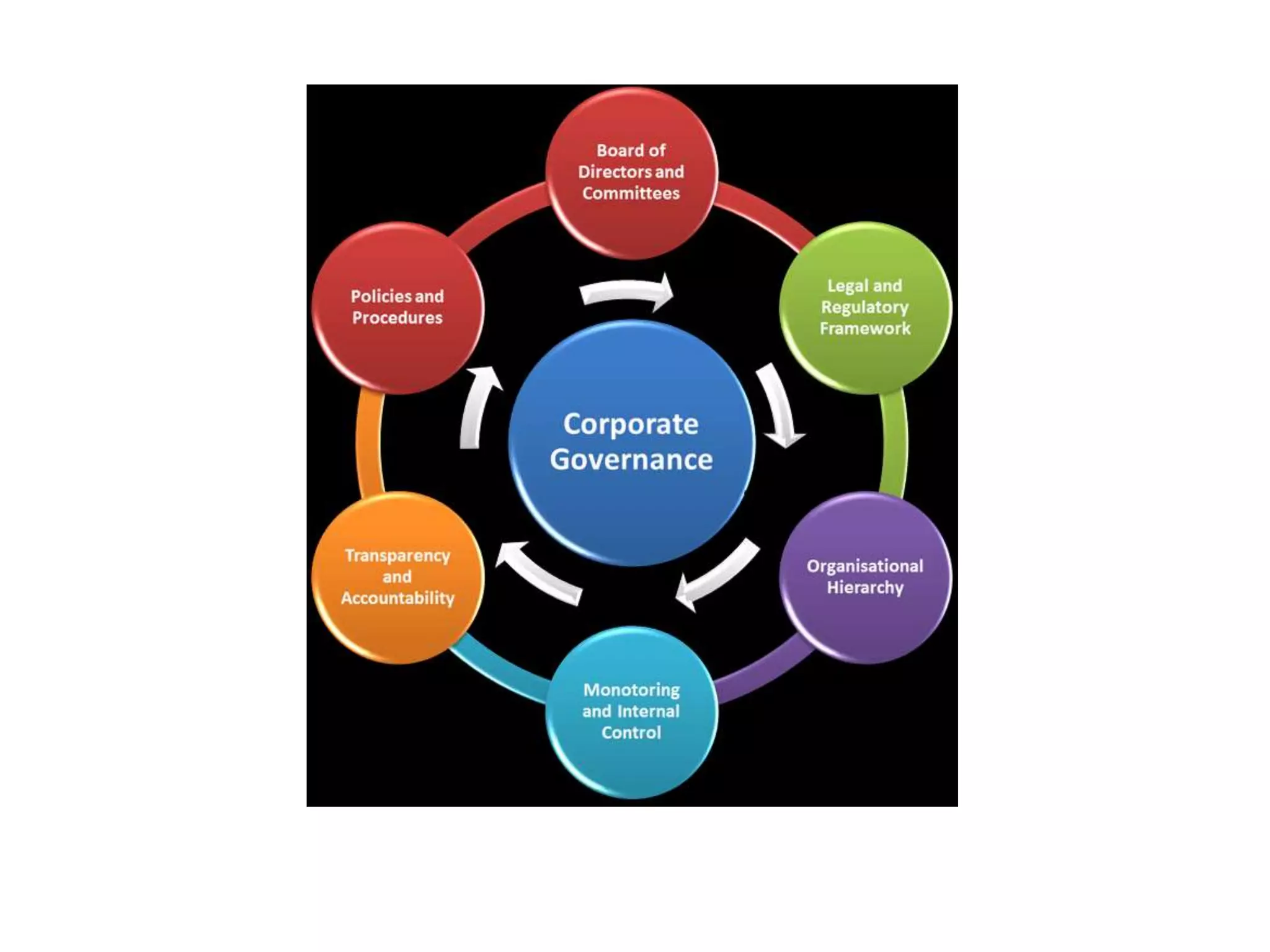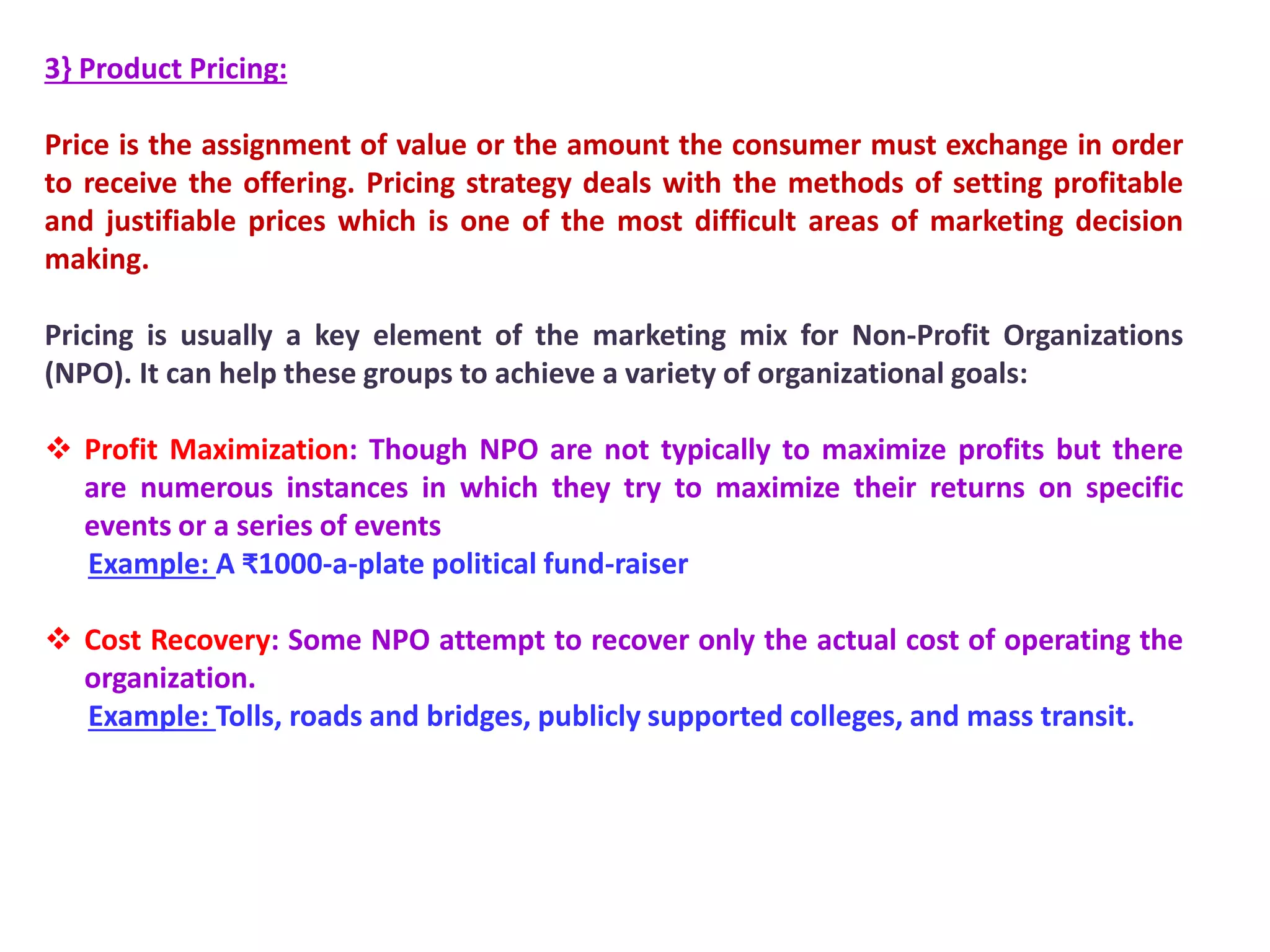The document discusses four key performance evaluation parameters for non-profit organizations: 1) Fund Accounting which requires keeping separate records for restricted and unrestricted funds, 2) Governance which ensures compliance, efficiency, and accountability, 3) Product Pricing which can help achieve goals like cost recovery or market incentives, and 4) Planning and Budget Preparation which involves strategic planning, consideration of internal/external factors, and quantitative expression of plans for resources and expenditures.


















